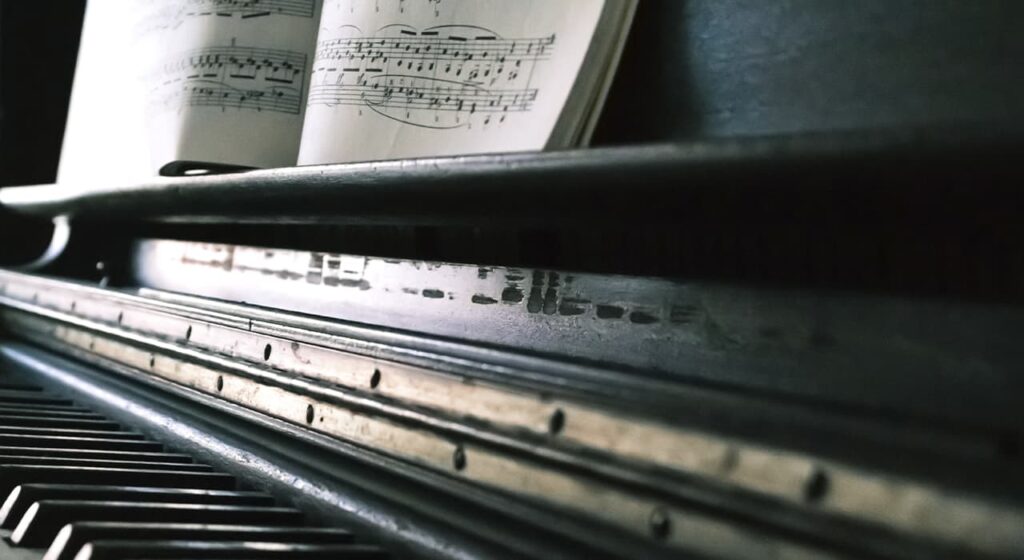Baroque music is a period in the development of European classical music roughly between 1600 and 1750.
Baroque music emerged at the end of the Renaissance and preceded the music of the Classical period.
The composing and performing techniques of the Baroque period became an integral and not insignificant part of the classical musical canon.
Such concepts as music theory, diatonic tonality, and imitative counterpoint were strongly developed. Musical ornamentation became very sophisticated, musical notation changed greatly, and the ways of playing the instruments evolved. The scope of genres has expanded, the complexity of musical works has grown, and such a type of work as opera has appeared. A large number of Baroque-era musical terms and concepts are still in use today.
The Baroque era saw the birth of such brilliant works as Johann Sebastian Bach’s fugues, George Frederick Handel’s Hallelujah Chorale from his Messiah oratorio, Antonio Vivaldi’s The Seasons, and Claudio Monteverdi’s Supper.
The creation by the Italian composer Claudio Monteverdi (1567-1643) of his recitative style and the successive development of Italian opera can be considered a passing point between the Baroque and Renaissance eras. The start of opera performances in Rome and especially in Venice already signified the recognition and spread of the new genre throughout the country.
Renaissance composers paid attention to the elaboration of each part of a musical work with little or no attention to the juxtaposition of these parts. Individually each part could sound excellent, but the harmonious result of the addition was more a matter of chance than regularity.
The emergence of the figured bass indicated a significant change in musical thinking-namely, that harmony, which is “the addition of the parts into a whole,” is as important as the melodic parts of polyphony themselves. More and more, polyphony and harmony looked like two sides of the same idea of composing harmonic music: harmonic sequences were given the same attention in composing as tritons in creating dissonance.
Italy becomes the center of the new style. The Papacy, though gripped by the struggle against the Reformation, nevertheless possessing enormous monetary resources, replenished by the Habsburg military campaigns, sought opportunities to spread the Catholic faith by expanding its cultural influence.
One important center of musical art was Venice, which was at that time under both secular and ecclesiastical patronage.
EARLY BAROCCO
A significant figure of the early Baroque period, whose position was on the side of Catholicism in opposition to the growing ideological, cultural and social influence of Protestantism, was Giovanni Gabrieli. His works belong to the “High Renaissance” style (the heyday of the Renaissance). However, some of his innovations in instrumentation (assigning to a certain instrument its own, specific tasks) clearly indicate that he was one of the composers who influenced the emergence of the new style.
One of the requirements imposed by the Church on the composition of sacred music was that the texts in works with vocals must be intelligible. This necessitated a move away from polyphony to musical devices where words came to the fore. The vocals became more complex and ornate compared to the accompaniment. Thus homophony developed.
MATURE BAROQUE MUSIC (1654-1707)
The Mature Baroque is distinguished from the Early Baroque by the ubiquity of the new style and the increased separation of musical forms, especially in opera. As in literature, the ability to stream music led to a wider audience; exchanges between centers of musical culture intensified.
LATE BAROQUE MUSIC (1707-1760)
The exact line between mature and late baroque is a matter of debate; it lies somewhere between 1680 and 1720.
An important milestone can be considered the almost absolute supremacy of tonality as a structuring principle of music composition. This is particularly evident in the theoretical works of Jean Philippe Rameau, who took Lully’s place as the principal French composer. At the same time, with the advent of Fuchs’ works, Renaissance polyphony provided a basis for the study of counterpoint. The combination of modal counterpoint with the tonal logic of the cadences created a sense that there were two compositional styles in the music–homophonic, and polyphonic, with the techniques of imitation and counterpoint.
The forms discovered by the previous period had reached maturity and great variability; the concerto, suite, sonata, concerto grosso, oratorio, opera, and ballet no longer had sharply expressed national characteristics. The generally accepted schemes of compositions were established everywhere: repeated two-part form (AABB), simple three-part form (ABC) and rondo.
